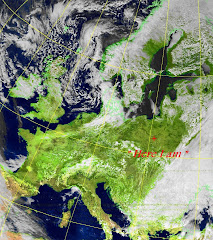ThingSpeak™ is another such platform and, like Ubidots, there is a function node available for it in Node-RED which I added to an existing flow, making sending data to ThingSpeak very easy.
I created a ThingSpeak channel called 'Soil Moisture', to receive and display the data. I have opened the channel to the public. So anyone can view the data by visiting ThingSpeak , then 'Channels' from the navigation bar, search for User ID 'SpacerLabs', and open channel 'Soil Moisture'. I invite anyone to 'export recent data' or 'add a comment' ; a ThingSpeak account is required for the latter.
| My ThingSpeak channel 'Soil Moisture' displaying moisture data |
There will be a break in the hourly updated data if I don't have Node-RED activated; also the situation when using Ubidots.
More 'SpacerLabs' channels and sensors could be added in future.





